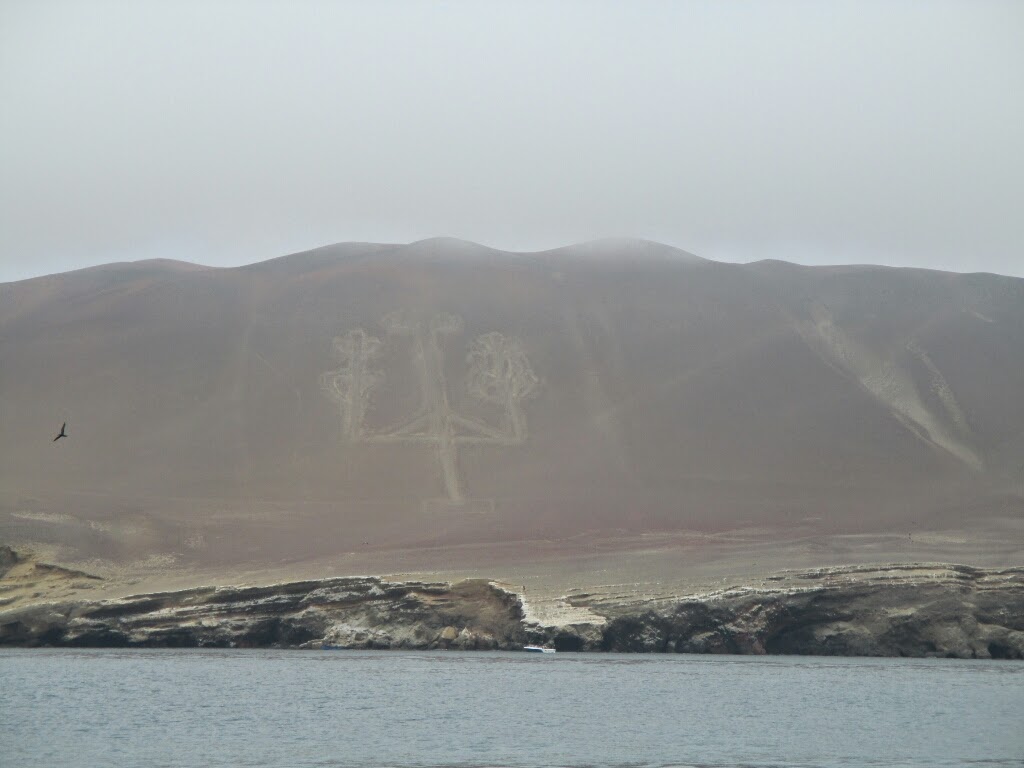Since the costs of going to the Galapagos Islands is a bit of a stretch, the poor man's Galapagos will do just fine.
When I asked my tour company about tsunami warnings after the earthquake, they didn't seem bothered at all, just happy to accept my money.
I took a tour from Paracas, and the first thing we saw from the boat was the mysterious Candelabra. Nobody knows what it's for or who made it, but there are multiple theories out there, ranging from aliens, to pirates, to free masons.
The island is made up of sedimentary rock, not sand. The figure doesn't dissipate because there is such little rain each year, only 30 minutes to an hour. After living in Vancouver for so long, this kind of place seems more mythical than anything.
And now for Islas Ballestas.
Sea lion paradise, with no predators for them here.
We saw a herron, which is supposedly unusual, boobies, crabs, pelicans, and tern.
The islands are teeming with wildlife, and you hear the sea lions barking and fighting from quite far away.
Each bark is unique, and that's how mother and babe recognize each other.
There are divers in the waters collecting snails and sea creatures. 2-3 rangers also live on the islands in order to help protect the national park. Guaneros come here for 3-4 months and collect guano every 7 years. Imagine putting that on your resume.
Birds use guano for nests, humans use it as a fertilizer since it has high nitrogen and phosphorus levels.
Humbolt Penguins!
The island is actually red rock, but it's absolutely covered in guano so it appears white/yellow. The smell of guano in the air is also extremely potent.
Sea lion gestation lasts 345 days. Mothers leave their babies on 'maternity beach' and go in search of food for about 4 days. Better than cocktails.
















No comments:
Post a Comment